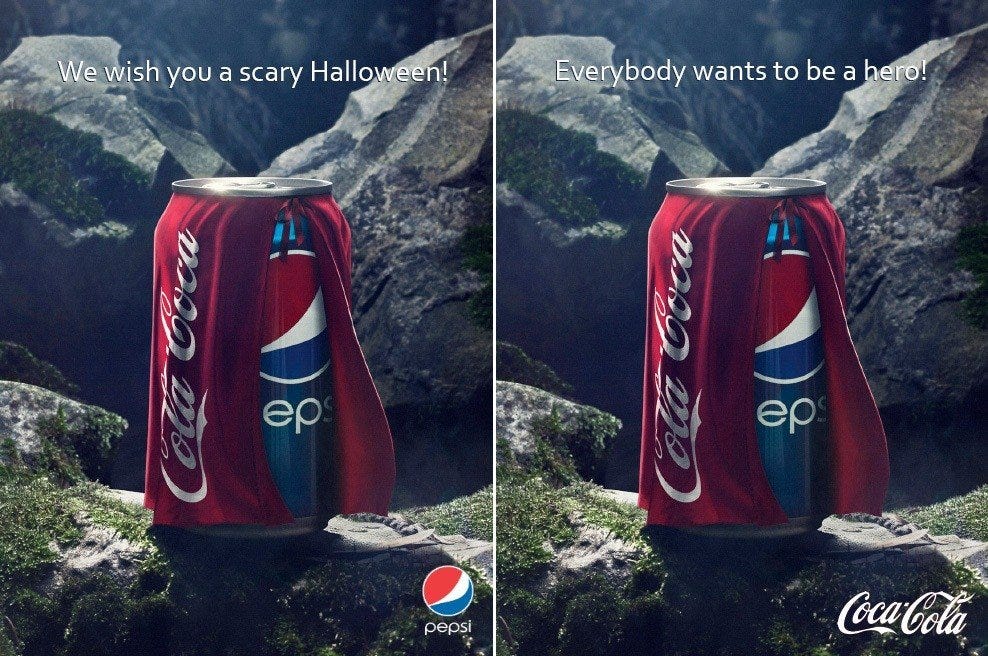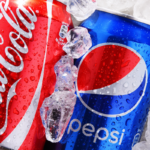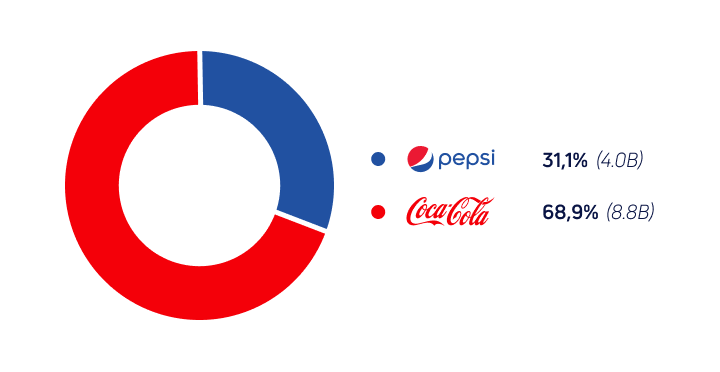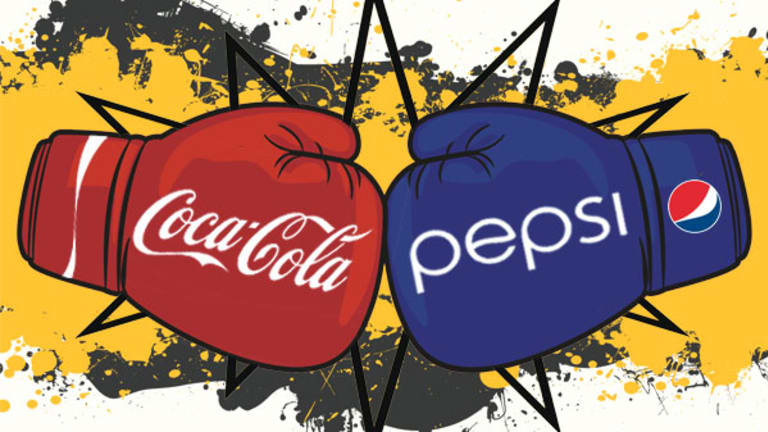Coke or Pepsi? Soft drinks have become essential for every table, especially incomplete junk food treats without these must-haves. But what comes into your mind when I say soft drinks? Pepsi or Coke, right? Let me tell you an interesting fact: most have linked soft drinks to either Pepsi or Coke. You will often hear people say these alternate terms when talking about frizzy drinks.
Interestingly, they are both the same but are fierce competitors of each other. If you remember the Halloween ad Coke where they show Pepsi can cover with coke and caption it as “We wish you a scary Halloween,” Pepsi uses the same ad and captions it as “everyone wants to be a hero. Both companies won significant attention from their audience and competitors, but their sales remained unaffected.
So the question is how both companies maintain a good position in the market while giving each other tough competition. Does it have anything to do with psychology, or is this just a marketing or luck game? We will discover answers to all these questions in today’s blog, so stay tuned.
What is the Basis of Rivalry Between Coke and Pepsi?
The histories of Coca-Cola and Pepsi both date to the 1890s, and until almost a century later, the two sodas appeared to be able to coexist harmoniously. However, during what is now known as the “Cola Wars,” the companies started openly criticizing one another through their marketing campaigns in the 1980s.
According to the History Channel, a chemist in Columbus, Georgia, created Coca-Cola in 1886 and started selling it to soda fountains. After six years, the Coca-Cola Company was established. A chemist also created Pepsi, creating his sugary beverage in 1893. He renamed his soda “Brad’s Drink” to “Pepsi-Cola” five years later, and in 1902 he established the Pepsi-Cola Company.
The “Pepsi Challenge” was the unofficial start of the soda rivalry. Pepsi began a marketing campaign 1975 demonstrating that more people chose Pepsi over Coke in a blind taste test.
The History Channel was briefed by David Greising, the author of “I’d Like the World To Buy a Coke,” that the Pepsi Challenge was real and not just a marketing ploy. Greising claims that Coca-Cola’s internal research “confirmed what the Pepsi Challenge was showing, which is that consumers preferred Pepsi if you just look at the taste of the beverage.” Even though Pepsi started to gain market share, Coca-Cola was still the more well-liked beverage.
Coca-Cola started releasing new products to maintain its market share and remain competitive. 1982 saw the release of Diet Coke, and 1983 saw the introduction of Coke and Diet Coke without caffeine.
Then, when Coca-Cola introduced “New Coke” in 1985, touting a new, sweeter recipe more akin to Pepsi’s, it made one of its most contentious decisions. This reversal, of course, backfired because customers demanded the return of the original product because they were furious about the change.
In response to the “New Coke” backlash, Pepsi released a commercial featuring a young girl who first criticizes the brand before trying and enjoying a Pepsi. The advertisement said Pepsi was “the choice of a new generation.”
Concurrently, Coke was retracting its choice to change its recipe. Coca-Cola announced that it was relaunching its original soda as “Coca-Cola Classic” just three months after introducing “New Coke.”
Despite the possibility that the “New Coke” scandal would have destroyed Coca-Cola, it ended up benefiting the company—the return of Coca-Cola Classic thrilled consumers, who started purchasing more of the beverage as a result.
Greising told the History Channel, “People wanted to taste the beverage again suddenly.” In the following decades, Coca-Cola has been able to capitalize on this trend, surpassing Pepsi in annual sales going forward.
For years, Pepsi’s sales had lagged behind Coca-Cola’s, but both sodas consistently ranked first and second. The Wall Street Journal ran the headline “Diet Coke Wins Battle in Cola Wars” in 2010 after Diet Coke’s sales finally overtook Pepsi’s for the first time.
Holding the top two spots would be a historic victory for Coca-Cola Co. in its long-running competition with PepsiCo Inc., which has been attempting to revamp its marketing after witnessing a decline in market share in recent years.
According to Statista, PepsiCo held a 24.1% share of the carbonated soft drink market in 2019, while Coca-Cola held a 43.7% share. According to Investopedia, PepsiCo had a market cap of $188.6 billion in 2020 compared to Coca-Cola’s $185.8 billion. (Note that those figures include not only the soda brands owned by Coca-Cola and PepsiCo but all of their brands.)
Current Marketing Strategies of Pepsi and Coco-Cola:
Coca-Cola’s Pricing Strategy
Coca-Cola bases its price on the value of its goods to consumers in various contexts. Coca-Cola uses what they call “meet-the-competition pricing” as their pricing strategy. This means that while their products are priced similarly to those of their rivals, Coca-Cola still wants to be seen as a unique product that is nevertheless reasonably priced.
PepsiCo’s Price Policy
With its “Hybrid Everyday Value” model, Pepsi pushes this value-based pricing strategy slightly further. This pricing strategy aims to encourage consumers to purchase Pepsi outside of sales. They offer a range of bottle sizes at different prices. The cost of this is determined by how many drinks are provided. Additionally, the promotion is carried out with the intended audience.

Ad Campaigns of Coco-Cola:
Coca-Cola has run several incredibly creative advertising campaigns that have helped the company generate significant sales and left a lasting impression on consumers. “Share a Coke with” is a campaign of that kind. This campaign first promoted the Coca-Cola bottles with names on them. It was well received by the consumers, who desired to keep the real bottle as a souvenir and see their names printed on Coca-Cola bottles in TV commercials. The campaign led to a roughly 7% increase in young adults’ Coke consumption. This campaign successfully played with people’s minds by creating a sense of ownership and a bond of closeness with Coke, another main reason the sales increased significantly.
Then, Coke introduced the well-known “Taste the Feeling” campaign. This campaign focused on the nostalgic sentiments and feelings of those connected to the venerable Coca-Cola brand. The commercial created an atmosphere of camaraderie and togetherness by showing groups of friends sulking over ice-cold Coke bottles and sharing them while toasting their friendship and reliving old memories.
The commercial “Holidays are Coming” is a highly successful Coke campaign. Most people connect the concept of holidays with sentiments of optimism, happiness, and returning home. as a beverage, which evokes feelings of coziness, warmth, friendship, brotherhood, enjoyment, leisure, travel, and togetherness.
Ad Campaigns of Pepsi:
The advertising campaigns of Pepsi and Coke are very dissimilar. This brand enjoys experimenting with the newest innovations and collaborating with contemporary celebrities. Pepsi’s commercials are humorous or simply clever, with a hint of irony from its competitors.
Pepsi is well-known for collaborating with celebrities on their advertising. The brand has been linked to numerous prominent figures from the acting and singing professions. Thus far, the brand has managed to entice celebrities such as Britney Spears, Cindy Crawford, Cardi B, and others, multiplying the brand’s overall sales.
A young child was shown standing on two Coke cans in a well-known Pepsi advertisement to reach a Pepsi can. The brand that feels that adding a little humor to their campaigns has found great success with these advertisements. But this kind of comedy occasionally worked against the brand, sometimes even damaging their reputation.
Coca-Cola aspires to enable friends, college students, professionals, and others to reunite, celebrate their brotherhood, and reminisce about their youth; PepsiCo, on the other hand, has positioned its products so that the current generation can relate to them. On the other hand, PepsiCo has succeeded in developing advertising campaigns that incorporate contemporary elements, a dash of humor, and exude “coolness”—the idea of being “cool” and thus superior to other tastes.
Without a doubt, the execution of their distinctive marketing strategies and creative imagination have contributed to their respective successes, which will continue to contribute until the centuries to come.
Conclusions:
Coca-Cola and Pepsi are the two most prominent soft drink brands, and the competition between them is fierce. Both brands share similarities, and people often mistake them as identical. Still, deep down, both brands differ significantly, not only in their tastes and formulas but also in their strategies for attracting their potential audience, which are also different. Coco-Cola focuses more on deeper emotional feelings and bonds like friendship and warmth.
On the other hand, Pepsi tries to win the media war by giving the impression of connecting generations. Both companies successfully target their potential audience, and sometimes, they use opposite brands, for example, in their ads to gain the spotlight. Still, despite the competition, both brands are successful giants of the food industry that focus on cold drinks and have countless other products to sell. According to the trends, both companies must go a long way and seem parallel yet successful.
read also : A psychological case study I Air bnb marketing



